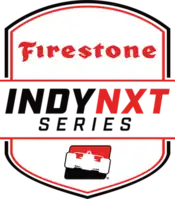 | |
| Category | Open wheel cars |
|---|---|
| Country | United States |
| Inaugural season | 1977 (predecessor) 1986 (original) 2002 (IndyCar sanctioned) |
| Chassis suppliers | Dallara |
| Engine suppliers | Mazda–AER (2015–2018) AER (2019–present) |
| Tire suppliers | Firestone |
| Drivers' champion | |
| Teams' champion | |
| Official website | Indycar.com/INDYNXT |
Indy NXT, previously Indy Lights, is an American developmental automobile racing series sanctioned by IndyCar, currently known as INDY NXT by Firestone for sponsorship reasons. Indy NXT is the highest step on the Road to Indy, a program of racing series leading up to the IndyCar Series.
A similar series named Indy Lights filled the developmental role for the CART series, and ran from 1986 to 1993 as the American Racing Series and Dayton Indy Lights from 1991 to 2001. The current IndyCar sanctioned series was founded in 2002 as the Infiniti Pro Series as a way to introduce new talent to IndyCar, with the moniker Indy Lights returning in 2008 when CART and IndyCar unified. The Indy Lights champion was awarded a $1M scholarship toward the IndyCar Series, and guaranteed three races including the Indianapolis 500 during this time. For 2023, Penske Entertainment announced a rebranding to the name Indy NXT.
Early origins
In the post-WWII era, through the early 1960s, open wheel race cars were almost exclusively front-engined "roadsters". The primary ladder series included sprints and midgets. By the end of the 1960s, the cars evolved into rear-engine formula-style machines. Likewise, the feeder series began to follow the same mold. When USAC became the primary sanctioning body for top-level Indy car racing, the ladder of progression began to change.
USAC Mini Indy Series
The SCCA Super Vee and Formula Atlantic series were among the first formula-based ladder series. However, neither had any direct tie to USAC. In 1977, USAC started the "Mini-Indy" series, using Super Vee machines. The series ended after 1980 when USAC stopped sanctioning Indy car races outside of Indianapolis.
Following the end of the "Mini Indy" series, the driver pool in the early 1980s to CART and the Indy 500 was drawn in a somewhat unorganized fashion among Super Vees, Atlantics, SCCA, former Can-Am drivers, sprints, midgets, and even stock cars and off-road racing. In addition, a number of CART series drivers during the 1980s and early 1990s were former Formula 1 competitors, most of whom had climbed the European-based ladder series.
Original series (1986–2001)

The original Indy Lights series was an open-wheeled racing series that acted as a developmental circuit for CART from 1986 to 2001. It was founded in 1986 as the American Racing Series (ARS). CART became the sanctioning body for the series in 1988, and it was renamed as Indy Lights in 1991, with title sponsorship by Firestone. Later, Firestone's subsidiary Dayton Tires took over as tire supplier and title sponsor.
A spec-series, CART Indy Lights used March chassis (essentially a modified 85B Formula 3000 chassis, renamed to Wildcat) from 1986 to 1992. In 1992 Lola became the primary chassis constructor to the series, using a modified F3000 chassis. In 1997, a newly updated and modern-looking chassis was introduced based on an F3000 design. It would remain through 2001. Buick V6 engines were used for its entire existence.
The ARS/Indy Lights series' championship winners included two CART champions, two IndyCar Series champions, seven CCWS race-winners and two Formula One drivers.
The Indy Lights schedule closely followed that of the CART series, and typically had a gap of up to a month while the primary CART teams raced at the Indy 500. The races were usually held the morning of the CART series races, as an undercard event. In early years, the Indy Lights series skipped superspeedway races such as Michigan, but eventually found its way to race there. In some rare occasions, the Indy Lights ran at non-CART tracks, generally as a support race to a series other than CART. In 2001 Indy Lights ran at Road Atlanta the weekend of the Petit Le Mans, and ran at Kansas with the IRL.
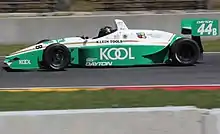
By the late 1990s and early 2000s, CART was suffering from financial problems. Meanwhile, in 1996, the rival Indy Racing League was formed. CART canceled the minor league outright after the 2001 season. By this time, the Toyota Atlantic series was equally effective in providing CART with new drivers. In addition, the Atlantics served as a springboard for such drivers as Greg Ray, Sam Hornish Jr. and Richie Hearn to enter the IRL. The Atlantics effectively became CART's primary feeder system, and later became Champ Car World Series' official in-house feeder championship for a time.
Current series (2002–present)
The Infiniti Pro Series was re-founded by the Indy Racing League and began racing in 2002, the year after the CART-sanctioned Indy Lights series' demise. It was a spec series using a TWR (Tom Walkinshaw Racing) developed 3.5L version of the V8 engine used in the Infiniti Q45 combined with Dallara chassis producing 420 horsepower (310 kW). The series initially struggled to attract drivers and some races have had fewer than 10 entrants. However, with the introduction of a number of road-course races to the schedule in 2005, many of America's top prospects like Marco Andretti and Phil Giebler were attracted to the series to run part-time schedules on road courses. In 2006, a boost in prize money even further increased car counts to 16 or more, with an even six oval and six road course mix. The selected races being double races, and a stand-alone race (independent of the IndyCar Series) were scheduled on the USGP weekend.
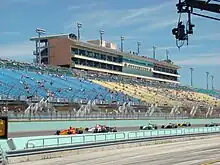
The series was called the Menards Infiniti Pro Series (MIPS) until 2006 when both Menards and Nissan dropped their sponsorship of the series. It was then known as the Indy Pro Series. On March 26, 2008, the series announced a changing of names, when the historical records and proprietary information of Champ Car were acquired by the IRL. The series then became known as Firestone Indy Lights.
The centerpiece of the Indy Lights schedule is the Freedom 100, contested at Indianapolis Motor Speedway on the Friday prior to the Indianapolis 500. The series also held a support race for the U.S. Grand Prix, the Liberty Challenge, from 2005 to 2007. It was the series' only event that was not a support race to an IndyCar event.
On September 9, 2007, during the Chicagoland 100, Logan Gomez beat Alex Lloyd by 0.0005 seconds (approximately 1.65 inches (42 mm) at 188 mph) which reflects the closest recognized finish in the over century-long history of organized automobile racing throughout the world.[1] In 2008, the margin was established by the Guinness Book of World Records as the closest finish ever in a car race.[2]
On May 24, 2013, Peter Dempsey captured his first Indy Lights win in the Freedom 100 in the closest finish in Indianapolis Motor Speedway history (0.0026 secs) in a four-wide finish.[3]
In June 2013, it was announced that the series would be promoted by Andersen Promotions beginning in 2014.[4] with IndyCar sanctioning remaining. In August it was announced that Cooper Tire would replace Firestone as the official tire of the series in 2014.[5] This resulted in all three levels of the Road to Indy leading up to the IndyCar Series being promoted by Andersen and feature Cooper tires, beginning in 2014. The Andersen team implemented a number of cost-reducing updates to the chassis and engine package in 2014 and introduced a new chassis and engine combination in 2015. On October 31, 2013, the series announced that Dallara would be the manufacturer of the fourth-generation Indy Lights chassis and it would be named the Dallara IL-15.[6] On November 1, 2013 a new logo was unveiled for the Indy Lights series[7] On November 26 it was announced that the engine for the new package would be a 2.0L turbocharged MZR-R four cylinder engine, tuned to last a full season of competition and producing 450 horsepower, with push-to-pass offering an additional 50 horsepower.[8]
.jpg.webp)
The 2020 season was canceled through a combination of low grid numbers and the COVID-19 pandemic.
As of 2021, the Dallara IL-15 continues to be the chassis employed by the series, but engines are now provided by AER, Advanced Engines Research, modifying and tuning base 2.0 liter I-4 Mazda power plants turbocharged to provide the same power and push-to-pass capability of the former engines, with the added capability of longevity: the engines are designed and fabricated to run an entire season without a rebuild. A halo was added to the IL-15 for the 2021 season.[9]
Andretti Autosport's Kyle Kirkwood captured the 2021 series championship, while HMD Motorsports' David Malukas finished second and Global Racing Group w/HMD Motorsports' Linus Lundqvist was third. HMD Motorsports/Global Racing Group secured their first Road to Indy team championship.
Firestone returned as the official tire supplier for the 2023 season.
Teams
| Team | Base | Founding Year |
|---|---|---|
| Andretti Autosport | Indianapolis, Indiana | 2008 |
| HMD Motorsports | Brownsburg, Indiana | 2019 |
| Juncos Racing | Indianapolis, Indiana | 2012 |
Specifications
Specifications (2002–2014)
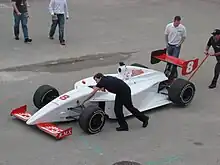
- Engine displacement: Nissan/Infiniti built by Speedway Motors 3.5 L (214 cu in) DOHC V8
- Gearbox: 6-speed sequential manual transmission
- Weight: 1,490 lb (676 kg) on ovals; 1,520 lb (689 kg) on road/street courses
- Power output: 420 hp (313 kW)
- Fuel: Sunoco 100 RON unleaded
- Fuel capacity: 25 US gallons (95 litres)
- Fuel delivery: Fuel injection
- Aspiration: Naturally aspirated
- Length: 191.5 in (4,864 mm)
- Width: 75 in (1,905 mm)
- Wheelbase: 117 in (2,972 mm)
- Steering: Manual, rack and pinion
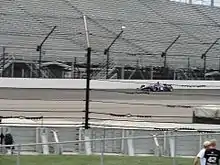
Specifications (2015–present)
- Chassis manufacturer:Dallara IL-15
- Engine displacement: Mazda-AER P63 2.0 L (122 cu in) DOHC inline-4
- Gearbox: 6-speed sequential semi-automatic gearbox
- Weight: 1,400 lb (635 kg) excluding driver and fuel
- Power output: 450 + 50 hp (336 + 37 kW) push-to-pass
- Fuel: VP Racing Fuels 101 RON unleaded
- Fuel delivery: Direct fuel injection
- Aspiration: Single-turbocharged
- Length: 192 in (4,877 mm)
- Width: 76 in (1,930 mm)
- Wheelbase: Undisclosed
- Steering: Manual, rack and pinion
Champions
USAC Mini-Indy Series
| Season | Driver | Chassis | Engine |
|---|---|---|---|
| 1977 | Zink Z11 | Volkswagen | |
| Lola T324 | Volkswagen | ||
| 1978 | Argo JM2 | Volkswagen | |
| 1979 | March | Volkswagen | |
| 1980 | Ralt RT1/RT5 | Volkswagen |
- 1977: Bagley and Johnson tied in the points and were declared co-champions.
Indy Lights
1 Chaves and ![]() Jack Harvey (Schmidt Peterson Motorsports were tied in points and wins (4 each). Chaves won the title based on more second-place finishes (5 vs 1).
Jack Harvey (Schmidt Peterson Motorsports were tied in points and wins (4 each). Chaves won the title based on more second-place finishes (5 vs 1).
Graduates
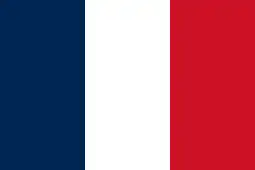 Didier André
Didier André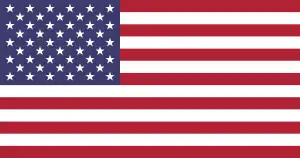 Jeff Andretti
Jeff Andretti Marco Andrettia
Marco Andrettia Richard Antinucci
Richard Antinucci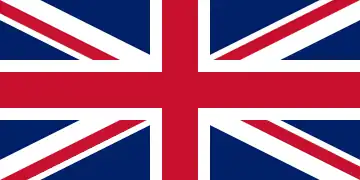 Ian Ashley
Ian Ashley Oliver Askew
Oliver Askew.svg.png.webp) Éric Bachelart
Éric Bachelart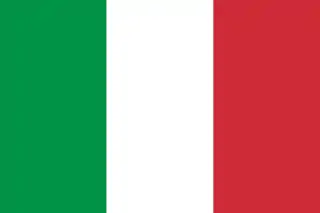 Fabrizio Barbazza
Fabrizio Barbazza Dillon Battistini
Dillon Battistini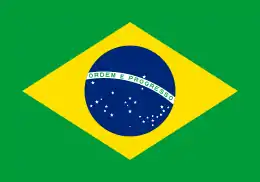 Ana Beatriz
Ana Beatriz Jon Beekhuis
Jon Beekhuis Townsend Bell
Townsend Bell Billy Boata
Billy Boata Brian Bonner
Brian Bonner Geoff Boss
Geoff Boss.svg.png.webp) Claude Bourbonnais
Claude Bourbonnais.svg.png.webp) Matthew Brabham
Matthew Brabham Steve Bren
Steve Bren.svg.png.webp) Jason Bright
Jason Bright Robbie Buhla
Robbie Buhla Buzz Calkinsa b
Buzz Calkinsa b Jaime Camara
Jaime Camara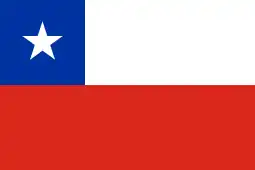 Juan Carlos Carbonell
Juan Carlos Carbonell Ed Carpentera
Ed Carpentera.svg.png.webp) Patrick Carpentierd
Patrick Carpentierd Hélio Castronevesa c d
Hélio Castronevesa c d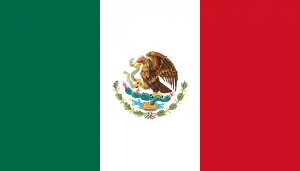 Alfonso Celis Jr.
Alfonso Celis Jr.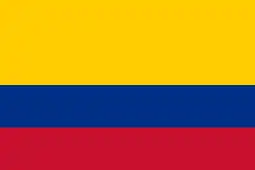 Gabby Chaves
Gabby Chaves Ross Cheever
Ross Cheever P. J. Chesson
P. J. Chesson Max Chilton
Max Chilton.svg.png.webp) Zachary Claman DeMelo
Zachary Claman DeMelo Bryan Clauson
Bryan Clauson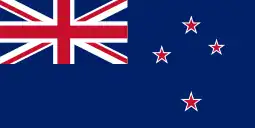 Wade Cunningham
Wade Cunningham Guido Daccò
Guido Daccò Wally Dallenbach Jr.
Wally Dallenbach Jr. Conor Daly
Conor Daly Cristiano da Mattad e
Cristiano da Mattad e Paul Dana
Paul Dana Airton Daréa
Airton Daréa.svg.png.webp) James Davison
James Davison Luis Díaz
Luis Díaz Mark Dismorea
Mark Dismorea Scott Dixona b c d
Scott Dixona b c d Mario Domínguezd
Mario Domínguezd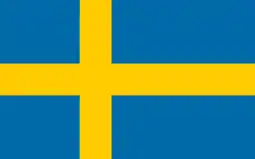 Fredrik Ekblom
Fredrik Ekblom RC Enerson
RC Enerson.svg.png.webp) Wim Eyckmans
Wim Eyckmans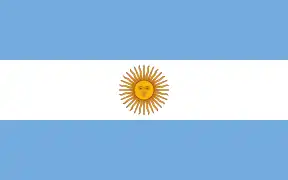 Juan Manuel Fangio II
Juan Manuel Fangio II Adrián Fernándeza d
Adrián Fernándeza d Stan Fox
Stan Fox A. J. Foyt IV
A. J. Foyt IV Franck Fréon
Franck Fréon Luiz Garcia Jr.
Luiz Garcia Jr. Affonso Giaffone
Affonso Giaffone Felipe Giaffonea
Felipe Giaffonea Phil Giebler
Phil Giebler Jorge Goeters
Jorge Goeters Marco Greco
Marco Greco Michael Greenfield
Michael Greenfield Mike Groff
Mike Groff Robbie Groff
Robbie Groff Dean Hall
Dean Hall Matt Halliday
Matt Halliday Scott Harrington
Scott Harrington Jack Harvey
Jack Harvey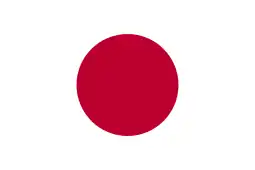 Naoki Hattori
Naoki Hattori Shigeaki Hattori
Shigeaki Hattori Jack Hawksworth
Jack Hawksworth Jon Herb
Jon Herb Bryan Hertaa d
Bryan Hertaa d Colton Hertaa
Colton Hertaa J. R. Hildebrand
J. R. Hildebrand.svg.png.webp) James Hinchcliffea
James Hinchcliffea Jay Howard
Jay Howard Ken Johnson
Ken Johnson Davy Jones
Davy Jones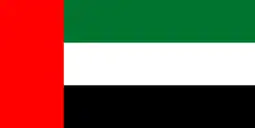 Ed Jones
Ed Jones P. J. Jones
P. J. Jones Niclas Jönsson
Niclas Jönsson Kyle Kaiser
Kyle Kaiser Tony Kanaana b c d
Tony Kanaana b c d Sage Karam
Sage Karam.svg.png.webp) Dalton Kellett
Dalton Kellett Charlie Kimballa
Charlie Kimballa Kyle Kirkwooda
Kyle Kirkwooda David Kudrave
David Kudrave Rodolfo Lavín
Rodolfo Lavín Eddie Lawson
Eddie Lawson Jaques Laziera
Jaques Laziera Matheus Leist
Matheus Leist Alex Lloyd
Alex Lloyd Linus Lundqvist
Linus Lundqvist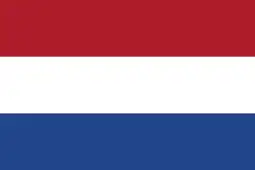 Arie Luyendyk Jr.
Arie Luyendyk Jr. David Malukas
David Malukas Pippa Mann
Pippa Mann Raphael Matos
Raphael Matos Hiro Matsushita
Hiro Matsushita Casey Mears
Casey Mears Thiago Medeiros
Thiago Medeiros Chris Menninga
Chris Menninga Dr. Jack Miller
Dr. Jack Miller.svg.png.webp) Greg Moored
Greg Moored Carlos Muñoza
Carlos Muñoza Brad Murphey
Brad Murphey Hideki Mutoh
Hideki Mutoh Josef Newgardena b c
Josef Newgardena b c Hideki Noda
Hideki Noda Ryan Norman
Ryan Norman Johnny O'Connell
Johnny O'Connell Patricio O'Warda
Patricio O'Warda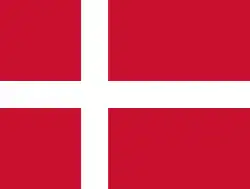 Benjamin Pedersen
Benjamin Pedersen Franck Perera
Franck Perera Spencer Pigot
Spencer Pigot Martin Plowman
Martin Plowman Ted Prappas
Ted Prappas Graham Rahala
Graham Rahala Greg Raya b
Greg Raya b Tony Renna
Tony Renna André Ribeirod
André Ribeirod Sting Ray Robb
Sting Ray Robb Billy Roe
Billy Roe Mario Romancini
Mario Romancini Felix Rosenqvista
Felix Rosenqvista.svg.png.webp) Marty Roth
Marty Roth Sebastián Saavedra
Sebastián Saavedra Gualter Salles
Gualter Salles Vinicio Salmi
Vinicio Salmi Franco Scapini
Franco Scapini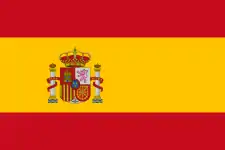 Oriol Serviàd
Oriol Serviàd Jeff Simmons
Jeff Simmons Guy Smith
Guy Smith Mark Smith
Mark Smith Sammy Swindell
Sammy Swindell Mark Taylor
Mark Taylor.svg.png.webp) Didier Theys
Didier Theys Brian Till
Brian Till.svg.png.webp) Paul Tracyd e
Paul Tracyd e Robby Unser
Robby Unser Jimmy Vasserd e
Jimmy Vasserd e Tristan Vautier
Tristan Vautier Zach Veach
Zach Veach Rinus Veekaya
Rinus Veekaya Jeff Warda
Jeff Warda Dan Wheldona b c
Dan Wheldona b c Stefan Wilson
Stefan Wilson Cory Witherill
Cory Witherill
a denotes driver who has won an IndyCar Series event.
b denotes driver who has won an IndyCar Series championship.
c denotes driver who has won an Indianapolis 500.
d denotes driver who has won a CART/Champ Car event.
e denotes driver who has won a CART/Champ Car World Series championship.
See also
References
- ↑ "To the fourth degree". IndyCar.com. 2007-09-13. Retrieved 2007-09-14.
- ↑ "Closest finish recognized as world record". IndyCar.com. 2008-03-04. Retrieved 2008-03-04.
- ↑ Marot, Michael. Indianapolis Motor Speedway With Historic Final Lap, Huffington Post, 24 May 2013, Retrieved 2013-05-24
- ↑ Andersen Promotions to take over Indy Lights, Racer, June 20, 2013, Retrieved 2013-10-22
- ↑ Cooper Tires Named Official Tire Of New Indy Lights Series Archived 2017-09-14 at the Wayback Machine, Performance Racing Industry, August 22, 2013, Retrieved 2013-10-22
- ↑ DiZinno, Tony. No surprise: Indy Lights confirms Dallara for new 2015 chassis, NBC Sports, October 31, 2013, Retrieved 2013-10-31
- ↑ new logo image
- ↑ Pruett, Marshall. Indy Lights series selects 2015 engine supplier, Racer, November 26, 2013, Retrieved 2013-11-26
- ↑ Pruett, Marshall (October 7, 2020). "Revamped Indy Lights to return in 2021". Racer. Retrieved April 21, 2021.